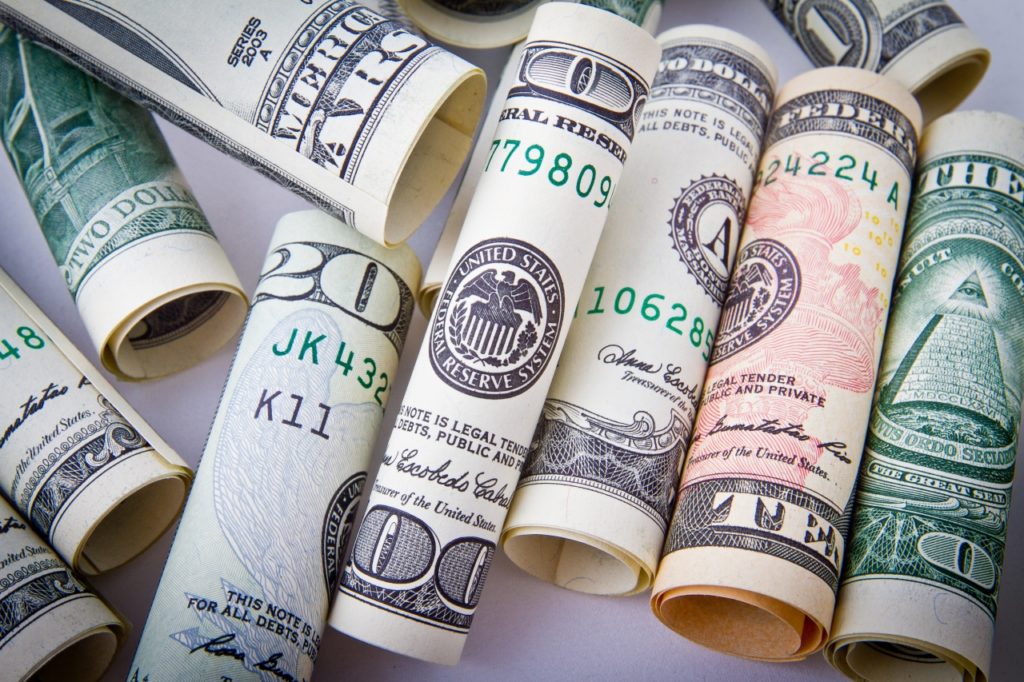On October 2020, news outlet CNBC asked Americans whether they want a second stimulus package (aka the $1,200 stimulus check). Many of them said “yes.” At the same time, however, many Washington lawmakers were unsure.
Fast forward to November 2020, a few weeks post-election, President-elect Joe Biden sat down with Senate Democratic leader Chuck Schumer and House Speaker Nancy Pelosi at his Delaware makeshift transition headquarters. The focus of their meeting: answering America’s question, “Are we getting another stimulus check?”
It’s no wonder people are asking for updates about the second stimulus package. We’re nearly done with 2020, but the economic consequences of COVID-19 are ongoing. The U.S. government’s March 2020 approval of the first stimulus package gave Americans hope as the provisions helped them coast the first wave of the pandemic.
But the country is still in the middle, if not the second wave, of COVID-19. Funds are getting lower, if not totally gone.
Homeowners are applying for loan modifications to cope with financial struggles. A majority of the population is still suffering from economic hardship; hence, their dependence on the second stimulus check updates.
Prior to October 2020, President Donald Trump and Congressional Democrats and Republicans have all touted the probability of a second stimulus package. But after months of negotiations, the prospect of the $1,200 checks seems to be fading.
So what happened? What is happening? And what’s going to happen next?
Why Did the Second Stimulus Check Package Take So Long?
Congress approved the first stimulus package with CARES Act, which was passed in March. The recipients of the first checks were low- to middle-income families and individuals. Married couples and individuals who filed jointly were eligible for up to $2,400 to $1,700 respectively. Children under the age of 17 received $500.
The Treasury Department and the Internal Revenue Service (IRS) sent more than 160 million of these stimulus checks through mail or direct deposit in the following months. At that time, a second round of checks seemed like a sure deal, but there were times it seemed like a long shot.
Consider the second stimulus package’s timeline:
May 15

The House of Representatives passed the HEROES Act, a bill that requested more than $3 trillion in spending. The legislation included a second round of stimulus checks. During this time, the legislation recommended raising the checks from $1,200 to $6,000 per family. They also wanted to expand the eligibility for dependents over the age of 17, as well as for people who don’t hold American citizenship.
July 29
Senate Majority Leader Mitch McConnell introduced the HEALS Act, which is a package of proposals that include a second round of stimulus checks. The proposal calls for payments similar to the first stimulus package. But this time, dependents over 17 years old would be eligible for this financial support. In an interview, President Donald Trump insists that the second stimulus checks should be more than $1,200.
July 30
GOP senators introduced a bill that calls for $1,000 stimulus checks for all recipients (both adults and children). Under the proposal, a family of five could receive $5,000.
August 13
The approval of the COVID-19 stimulus bill seemed like a few weeks away, but Capitol Hill leaders could not agree on other issues. One of the issues they couldn’t agree on was the $,1200 check. The impasse, however, poured cold water at the Treasury Department’s hopes of releasing the checks to Americans in August.
September 10
The Republican senators failed to move the small aid bill, a bill that included $500 billion in new aid fails. The proposal also included enhanced unemployment benefits for small businesses.
October 1
The House Democrats pass an updated version of the HEROES Act, which brought the total cost down to $1 trillion. The proposal still included the $1,200 stimulus package plus dependents of all ages were eligible for the $500 payments.
October 7
Trump proposes stand-alone legislation on areas lawmakers can agree on. The idea was rejected by the Democrats.
October 12
The White House came up with a bigger offer for the stimulus bill, as per the President’s wishes. The new package offered $1,200 checks for adults and $1,000 for children. It also included $400 enhanced federal unemployment insurance.
The final update, October 26, saw the slowing down of talks regarding the second stimulus package but not the end. All talks were halted for a moment to give way for the Presidential elections.
Now, the results are in and Joe Biden is the President-elect of the United States of America. What does this mean for the second stimulus checks? Will updates be more positive?
Second Stimulus Package Post-Trump, Pre-Biden’s Official Term

On November 20, the President-elect sat down with Pelosi and Schumer to discuss the release of the prolonged emergency aid package. During the sit-down, Pelosi expressed her hope that discussions with the Senate’s Republicans would come to fruition. Meanwhile, Biden’s team released a summary of the meeting, which also expressed Biden’s wishes for the Congress to pass an emergency aid package during the lame-duck session (aka the remaining period of Trump’s presidency before Biden’s inauguration).
What Does Biden Want from the Stimulus Package?
Should this package finally be passed, this would be the first piece of financial support legislation from the federal government since the CARES Act of 2020. A majority of the exhausted funds had already been dedicated to the remaining unemployment benefits, which are set to end on December 26. The summary of Biden’s meeting suggests that the President-elect aims to replicate many aspects of the CARES act.
Recently, Biden has called for the signing of the HEROES Bill, a move that has been strongly opposed to by the Republicans in Congress.
What Will the Second Stimulus Package Include?
The President-elect is determined to get the new bill passed before the Congress’ lame-duck session. Donald Trump may have lost the 2020 election but he is still the president until January 20. Biden’s team would need a great deal of cooperation for the outgoing president to pass the deal but that seems unlikely.
Since the election, Trump’s task diary shows that he hasn’t been active in a lot of governmental activities. Instead, he is focused more on pursuing vote fraud lawsuits. Recently, he failed to attend a virtual conference on pandemic preparedness, choosing to golf on his personal resort.
Despite the current president’s seemingly lack of interest in the stimulus checks, many Americans take hope in the President-elect’s words, “Now, not tomorrow.” But when that tomorrow will come, no one knows — for now.
If you are one of the many Americans waiting for updates on the stimulus package, the waiting time can be frustrating. But since nothing is guaranteed, it’s best to manage your finances during the long wait.
While Waiting for the Stimulus Package: Your Backup Plan
Plan as if there is no stimulus package.
Although many Americans are optimistic about the potential economic relief from Biden’s presidency, the legislation takes time. Instead of banking all of your hopes on the stimulus package, it’s best to get your ducks in a row.
Start by trimming down any unnecessary expenses. Review your expenditures to find areas where you can save more. Also, identify areas where the current quarantine has saved you money, such as dining out expenses and travel expenses. Take note of these areas and put the money you saved into an investment or a bank account.
Find ways to make more money.

Cutting your budget can only take you so far. Once you’ve trimmed your expenses, look for ways to make extra income in order to make ends meet.
Here are some ways that add more money to your budget:
-
- Look for a part-time job or a side hustle. Prioritize job hunting. Side hustles can help you bring in extra income while you wait
- Cash in your credit card points. If you have to stockpile them for a vacation, cash them in instead to loosen up your expenses.
- Sell belongings on online marketplaces. Now is the time to declutter your home and sell your stuff on Facebook marketplace, Amazon and Craigslist.
The second stimulus package has had such a long journey, it seems like an impossible wait for Americans affected by COVID-19. Although Joe Biden’s aim to sweep stimulus plans offers hope, it may not happen until 2021.
Instead of putting all of your hopes in the second package, it’s best to know your options to secure your finances during the pandemic.



